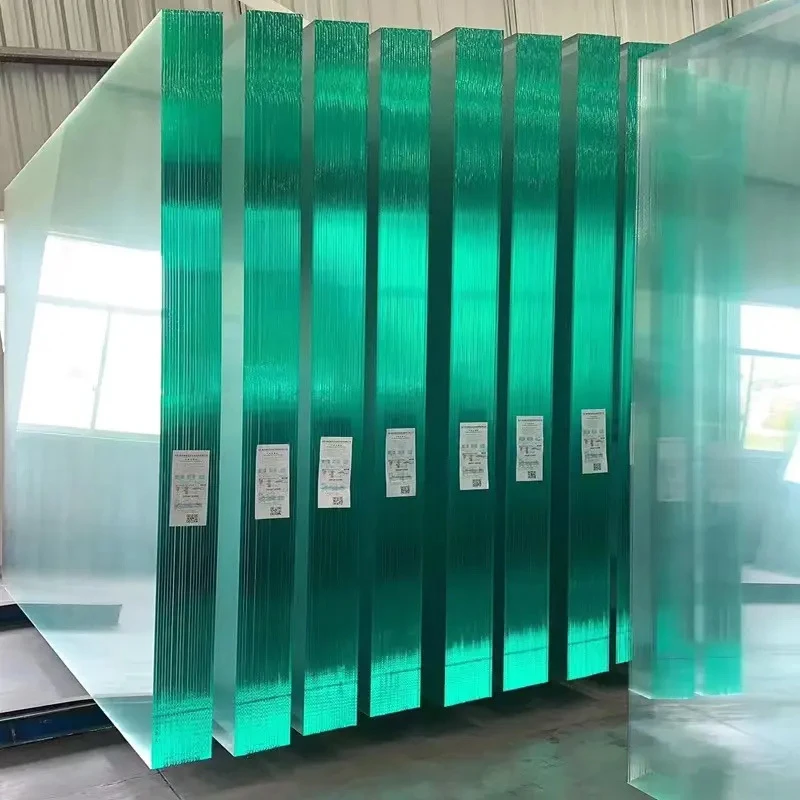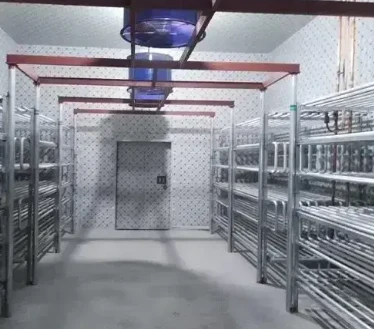Annealed glass is one of the most common types of glass used in various applications today, ranging from residential windows to complex architectural designs. With its numerous benefits, including safety and versatility, it’s essential to understand the different types available and their specific uses. Below is an exploration into the different types of annealed glass, emphasizing their unique properties and applications.

Annealed glass, also known as float glass, is a basic glass type produced by slowly cooling molten glass to relieve internal stresses after it has been shaped. This cooling process allows the glass to become uniform and more stable, making it easier to cut and install. Here’s a breakdown of the different types of annealed glass and how they cater to diverse needs
1. Clear Annealed Glass
Clear annealed glass is the most straightforward type in the annealed glass category. Its transparency provides excellent clarity, making it ideal for applications where visibility is a priority, such as display cases and picture frames. This type of glass also serves as a base for various forms of glass processing, such as tempering or coating, where additional strength or functional properties are required.

2. Patterned Annealed Glass
Patterned annealed glass, sometimes called obscure or frosted glass, features a textured surface. This texture is achieved during the glass's formation process and serves both an aesthetic and functional purpose. It is widely used in applications where privacy is important, such as bathroom windows and office partitions. The patterning can diffuse light, reducing glare while still allowing natural light to filter through, making spaces feel bright yet private.
3. Colored Annealed Glass
Colored annealed glass offers both aesthetic and functional benefits. By adding metallic salts during manufacturing, this glass can take on various hues. It is particularly popular in architectural designs where color is integral to the aesthetic of a building. Additionally, colored annealed glass can help in reducing solar heat gain, making it energy efficient by cutting down on cooling costs.
4. Low-Iron Annealed Glass
For projects requiring ultra-clear glass with minimal color distortion, low-iron annealed glass is the answer. This type of glass is manufactured with reduced iron content, resulting in greater transparency and clarity compared to standard clear annealed glass. Low-iron glass is often used in high-end architectural applications, such as storefronts and museum displays, where visual acuity and natural color rendering are crucial.
5. Laminated Annealed Glass
Laminated annealed glass involves sandwiching a layer or interlayer of polyvinyl butyral (PVB) or other materials between two layers of annealed glass. This type is particularly valuable in providing safety and security, as it holds together when shattered, reducing the risk of injury. Laminated glass is standard in automotive windshields, skylights, and other areas where impact resistance is essential.
types of annealed glass
6. Insulated Annealed Glass
Commonly used in windows designed for superior thermal performance, insulated annealed glass consists of two or more panes of annealed glass separated by a space filled with air or inert gas. This separation creates a barrier that reduces heat transfer, improving energy efficiency. The insulation also provides acoustic benefits, making it an excellent choice for environments requiring noise reduction.
Each of these types of annealed glass brings its unique benefits to specific applications, and understanding these can significantly impact the effectiveness of the glass in terms of safety, functionality, and aesthetics.
Professionals dealing with glass selection for construction or renovation should consider factors such as location, climate, and the intended function of the space when choosing the most suitable type of annealed glass. By doing so, they can ensure that both the practical and aesthetic needs are met, offering clients the best solutions for their specific requirements.
It’s also noteworthy that although annealed glass forms the basis for more advanced glass products, such as tempered and laminated glass, its simplicity and versatility give it particular importance in the world of glass applications.
In crafting spaces that are both beautiful and functional, annealed glass stands out as a versatile material capable of meeting the demands of modern architecture and design. Embracing these various types can lead to innovative solutions and enhanced environments that capitalize on glass’s inherent qualities of transparency and strength.
In conclusion,
annealed glass embodies the balance between simplicity and function. Its many types offer a myriad of options for builders, architects, and designers to dress spaces in light, color, and texture while ensuring safety and performance. As technology advances, the possibilities for using annealed glass will only expand, inspired by the evolving needs of a modern world.
 Afrikaans
Afrikaans  Albanian
Albanian  Amharic
Amharic  Arabic
Arabic  Armenian
Armenian  Azerbaijani
Azerbaijani  Basque
Basque  Belarusian
Belarusian  Bengali
Bengali  Bosnian
Bosnian  Bulgarian
Bulgarian  Catalan
Catalan  Cebuano
Cebuano  Corsican
Corsican  Croatian
Croatian  Czech
Czech  Danish
Danish  Dutch
Dutch  English
English  Esperanto
Esperanto  Estonian
Estonian  Finnish
Finnish  French
French  Frisian
Frisian  Galician
Galician  Georgian
Georgian  German
German  Greek
Greek  Gujarati
Gujarati  Haitian Creole
Haitian Creole  hausa
hausa  hawaiian
hawaiian  Hebrew
Hebrew  Hindi
Hindi  Miao
Miao  Hungarian
Hungarian  Icelandic
Icelandic  igbo
igbo  Indonesian
Indonesian  irish
irish  Italian
Italian  Japanese
Japanese  Javanese
Javanese  Kannada
Kannada  kazakh
kazakh  Khmer
Khmer  Rwandese
Rwandese  Korean
Korean  Kurdish
Kurdish  Kyrgyz
Kyrgyz  Lao
Lao  Latin
Latin  Latvian
Latvian  Lithuanian
Lithuanian  Luxembourgish
Luxembourgish  Macedonian
Macedonian  Malgashi
Malgashi  Malay
Malay  Malayalam
Malayalam  Maltese
Maltese  Maori
Maori  Marathi
Marathi  Mongolian
Mongolian  Myanmar
Myanmar  Nepali
Nepali  Norwegian
Norwegian  Norwegian
Norwegian  Occitan
Occitan  Pashto
Pashto  Persian
Persian  Polish
Polish  Portuguese
Portuguese  Punjabi
Punjabi  Romanian
Romanian  Russian
Russian  Samoan
Samoan  Scottish Gaelic
Scottish Gaelic  Serbian
Serbian  Sesotho
Sesotho  Shona
Shona  Sindhi
Sindhi  Sinhala
Sinhala  Slovak
Slovak  Slovenian
Slovenian  Somali
Somali  Spanish
Spanish  Sundanese
Sundanese  Swahili
Swahili  Swedish
Swedish  Tagalog
Tagalog  Tajik
Tajik  Tamil
Tamil  Tatar
Tatar  Telugu
Telugu  Thai
Thai  Turkish
Turkish  Turkmen
Turkmen  Ukrainian
Ukrainian  Urdu
Urdu  Uighur
Uighur  Uzbek
Uzbek  Vietnamese
Vietnamese  Welsh
Welsh  Bantu
Bantu  Yiddish
Yiddish  Yoruba
Yoruba  Zulu
Zulu 


